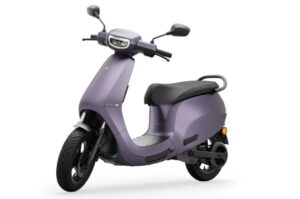
Color mixing is a fascinating aspect of art and design, influencing everything from painting to digital graphics. One of the most common questions in color theory is: What color do green and red make when mixed? The answer depends on the type of color mixing—subtractive (paints and pigments) or additive (light). Let’s explore both scenarios and understand how they impact color perception.
When Red and Green colors are mixed, the Yellow color is produced! It is a sign of positivity, energy, joy, optimism and intellect.
Why Does Red and Green Make Brown in Paint?
In the subtractive color model, red and green are complementary colors. When mixed, they absorb different wavelengths of light, resulting in a neutralized, muted tone such as brown or gray. The exact shade depends on the ratios used:
- More Red: Produces a warm brown tone.
- More Green: Produces an earthy, olive-brown color.
- Equal Parts: Results in a neutral brown or gray.
Why Does Red and Green Make Yellow in Light?
In the RGB color model used for screens, red and green are primary colors. When combined at full intensity, they create yellow light. This principle is commonly seen in digital displays, projectors, and stage lighting.
Science of Color Mixing
Before we dive into the world of red, green, and yellow, let’s understand the basics of color mixing. Colors, as we perceive them, are the result of the way light interacts with objects. The colors we see are determined by the wavelengths of light that are absorbed and reflected by the object’s surface.
RGB Color Model
In the world of digital displays and electronics, the RGB (Red, Green, Blue) color model is widely used. In this model, colors are created by combining different intensities of red, green, and blue light. By adjusting the intensity of each primary color, a vast array of colors can be produced. Interestingly, when all three primary colors are set to their highest intensity, the result is pure white.
CMYK Color Model
For printing purposes, the CMYK (Cyan, Magenta, Yellow, Key/Black) color model is employed. Here, colors are created by subtracting certain wavelengths of light. Combining cyan, magenta, and yellow inks produces a wide spectrum of colors. The addition of black ink is included to improve contrast and produce darker shades.
Wonders of Yellow
Yellow is often associated with brightness, positivity, and energy. It’s the color of sunshine, representing warmth and happiness. Let’s explore some intriguing aspects of yellow that make it such a captivating hue.
Yellow in Art and Culture
Throughout history, artists have utilized yellow to evoke specific emotions and themes in their artwork. From Vincent van Gogh’s iconic “Sunflowers” to Gustav Klimt’s mesmerizing “The Kiss,” yellow has played a pivotal role in capturing the essence of life, love, and vitality.
Yellow in Nature
Nature itself showcases an abundance of yellow hues. From the cheerful petals of daffodils and sunflowers to the striking patterns of exotic butterflies, yellow is widely prevalent in the world around us. In some cultures, yellow is associated with prosperity and wealth, making it a popular choice for auspicious occasions.
Psychological Impact of Yellow
Yellow has a profound impact on human emotions and behavior. It is believed to stimulate mental activity, foster creativity, and promote a sense of optimism. On the flip side, excessive exposure to yellow can lead to feelings of anxiety or restlessness. Understanding the psychology of colors helps us harness their power in various aspects of our lives, such as interior design and marketing strategies.
Red, Green, and Yellow in Everyday Life
The combination of red and green to form yellow is not just a theoretical concept but a practical reality that surrounds us in our daily lives. Let’s explore some instances where these colors converge and the significance they hold.
1. Traffic Signals
One of the most critical applications of these colors is in traffic signals. The red light tells us to stop, the green light signals us to go, and when they combine, the yellow light warns us to slow down before the light turns red. This simple yet effective system keeps our roads safe and organized.
2. Fruits and Vegetables
In the realm of nature’s bounty, we find numerous examples of red and green combining to produce yellow fruits and vegetables. Bananas, for instance, start green, turn yellow as they ripen, and develop reddish hues as they become overripe.
3. Autumn Splendor
The breathtaking beauty of autumn foliage is a vivid example of red and green coming together. As the chlorophyll in leaves breaks down, the green pigment fades, revealing stunning shades of red, orange, and, you guessed it, yellow!
Conclusion
The fascinating world of colors never ceases to amaze us. When you mix red and green, the answer is a vibrant and captivating shade of yellow. Understanding the science and psychology behind colors opens up a realm of possibilities, from creating art that stirs emotions to using colors strategically in our daily lives.
Next time you see the golden rays of sunlight filtering through the green leaves of a tree, you’ll know the magic behind the question, what color do red and green make – The answer is yellow! Embrace the brilliance of colors, and let them fill your life with joy and wonder!
Read Next Blog:
Conjunctivitis Outbreak: How to Prevent and Treat During Monsoon







